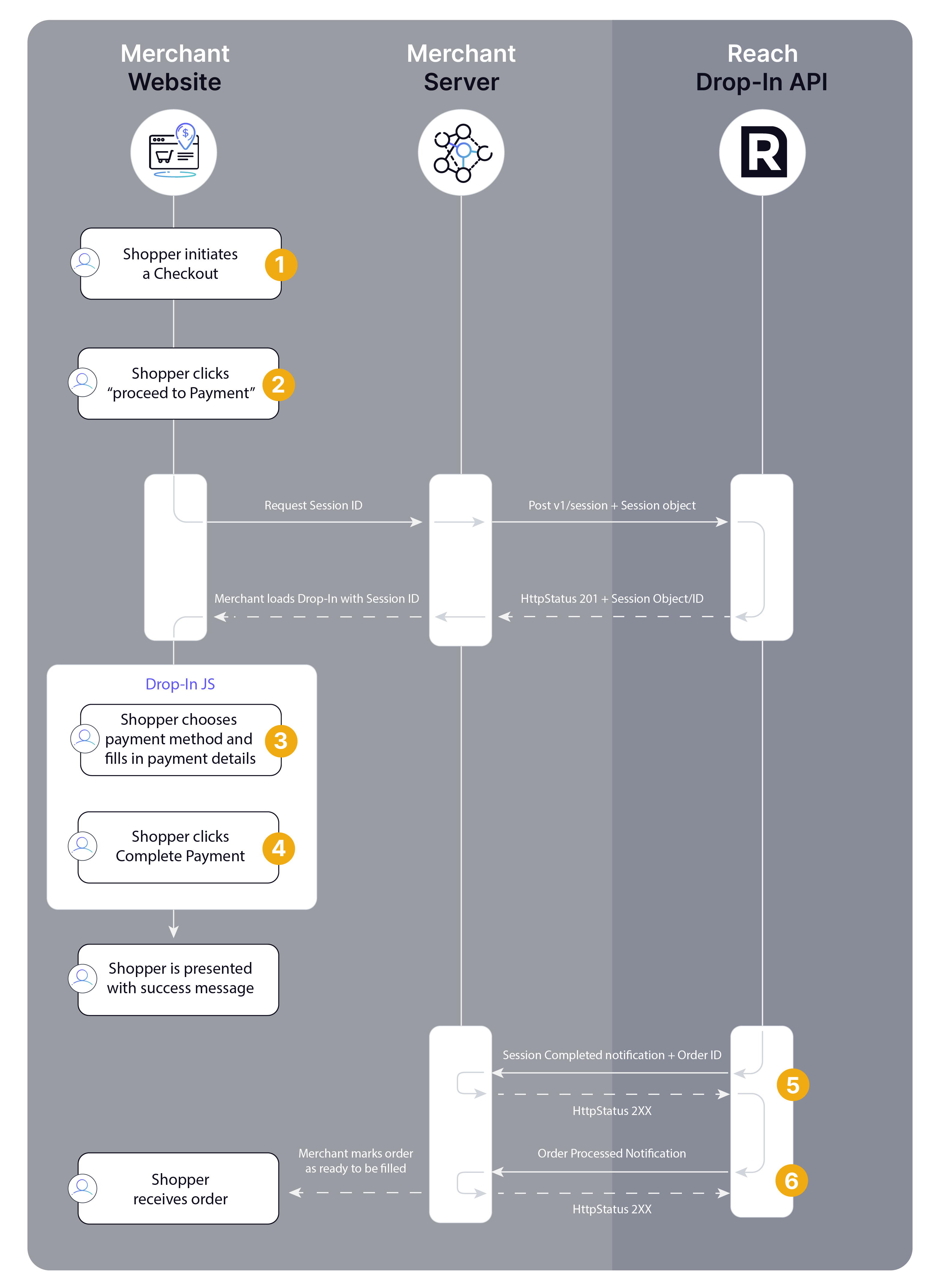Drop-In
The Drop-In payment solution is a fast and secure way to accept payments online without extensive front-end development work. You can automatically display and accept payment methods worldwide with a single embedded iframe.
Drop-In features
- Local currency advantage: Access to the best wholesale FX rates
- Multiple payment methods: Supports various international payment methods
- Reduced card friction: Real-time card validation, number masking, and inline error messaging
- Mobile-ready: Fully responsive design
- International: Supports 36 languages
- Style customization: Customizable colors, borders, and fonts
- 3D Secure: Supports 3D Secure
- Fraud and compliance: Multi-factor fraud system and PCI DSS Level 1 compliance
Drop-In payment flow
The Drop-In payment process makes it easy for shoppers to pay quickly and securely. The following flow diagram outlines the key steps of the Drop-In payment process.
- The shopper initiates a checkout.
- When the shopper clicks to proceed to payment, your server requests the Session API to create a new Session object. The response includes a Session object containing a Session ID.
- The Drop-In is instantiated in the shopper's browser using the rch.js library and the Session ID.
- The shopper selects a payment method and fills out the payment details to complete the checkout.
- Reach will notify your server when the Session is COMPLETED. The notification contains the Order's ID.
- Reach will notify your server of each Order state change until an order is PROCESSED.

Drop-In payment flow diagram
Refunds
You can process refunds through the Reach Admin Portal. For further details, visit our Reach Admin help. Additionally, you can manage refunds via the Order API.
Learn more
Begin integrating with the Reach Drop-In API using our getting started guide.
Learn how to implement the Drop-In JavaScript library (rch.js).
Learn how to customize the Drop-In app
Understand the various states and notifications associated with Drop-In
Understand the billing profile reference and the billing profile ID for the Drop-In API.
Updated 20 days ago
